Paul Alkazraji's Blog, page 5
December 15, 2016
'The Jazz Files' Review
 The Jazz Files by Fiona Veitch Smith
The Jazz Files by Fiona Veitch SmithMy rating: 5 of 5 stars

It’s the summer of 1920. Charlie Chaplin is in London promoting ‘The Kid’. The Jazz Age is just picking up the tempo of its swing. So, put on your shift dress and get ready to do the ‘swirly-armed’ dance: technically not, as the author explains with a satisfying knowledge of historical detail, the Charleston.
It was the year that Agatha Christie’s first published novel ‘The Mysterious Affair at Styles’ introduced readers to Poirot, Japp and Hastings. Read by the character Poppy in ‘The Jazz Files’, it is an important reference point for period and genre, and we are similarly introduced to some of the cast of this series, which continues with the recently published ‘The Kill Fee’.
Poppy Denby arrives from the lesser-known location of Morpeth to England’s capital to stay with her aunt Dot and companion Grace, in some ways the ‘Hinge and Bracket’ of the era’s feminist movement and apparently friends of Dot’s namesake. Having a journalist protagonist was a winner for me, and we begin to see how this Methodist lass works out the ethical challenges of her profession in the grey zones of investigative reporting.
There follows a classic puzzle of working out just who did what to whom and why, and it unfolds intriguingly (as in any Poirot TV episode my wife is guessing correctly fifteen minutes in whilst I am still floundering half an hour after the closing credits). Only in Paris, for personal reasons, did I feel I wanted more of a sense of place, nevertheless, the enjoyment for me was a tour through the social history of the period that was stodge-free and fun. What emerges is a heart-felt homage to pioneers of women’s liberation.
It is a work written, amongst other reasons, to till the soil in the mainstream, where the use of the occasional ‘b’ word will be of less concern to the average MM (Murder Mystery) reader than the average MU (Mothers' Union) member, though indeed there may be considerable overlap. Tight writing, dialogue that drives the plot forward, and some ‘delicious’ writerly phrases take me back to the larger-than-life aunt Dot. She is described as looking like ‘marshmallows on layers of meringue, clothed in voluminous peach silk… squeezed into a wicker basket chair on wheels’. Very entertaining.
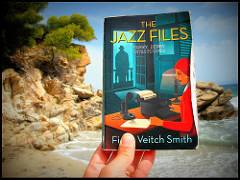
By this reviewer:

View all my reviews
Published on December 15, 2016 08:45
October 20, 2016
Bringing smiles to the child refugees held in a toilet paper factory
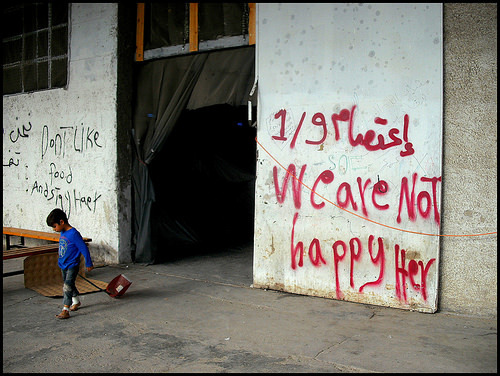
Words and photos by Paul Alkazraji.
At a refugee camp in a former toilet paper factory in northern Greece, a team of volunteers from an Albanian church has been bringing a little happiness to those trapped in the difficult living conditions.
In the ‘Softex’ camp on the industrial periphery of Thessaloniki, over a thousand mostly Syrians have been hastily accommodated after an informal camp at Idomeni, near the Macedonian border, was closed in May.
It is one of many where some 57,000 refugees are now held in official government camps throughout Greece, in a measure aimed at dealing with Europe’s huge migration crisis after border fences were hastily built and the Balkan migration route closed.
Teams from The Kennedy Foundation in Albania have been making weekly runs here since the spring to bring children’s activities including face painting, action games and a bouncy castle. Under the umbrella of volunteering organisation InterVolve, they also bag up and distribute fresh vegetables tent by tent up to 600 portions a day.
Many of those tents have been erected inside the ‘Softex’ factory to provide additional shelter from the none-to-distant winter. In the gloomy darkness children push each other around in rickety prams and play with broken bricks. There are makeshift street stalls, coffee shops and flat-bread bakers, and it has all the aromas both sweet and foul of a Damascus souk.
Though attempts have been made to improve the comfort of those stuck here in limbo, and NGOs and other inter-governmental agencies are present, there are reports that women and children have been afraid to leave their tents after dark for fear of sexual assault from other refugees.
“When we first came here, I saw they were living in bad conditions, and if you’d asked me to enter, I would not,” says Kennedy team member Klaus Kalemi. “But I did because I wanted to help. I feel terribly sorry for what has happened to them. They came from war and we should have better places for them. I think that all of them were hoping for a better future, because I saw the writing on the walls here everywhere.”
Klaus and others in the Albanian team communicate with the Arabic words they’ve learned, and face paint and manicure all those who come to them. “I saw that the children were smiling and happy and kept calling us ‘fri-ends’, even though I was here for the first time,” he says. “That was really touching. They knew the sign on my shirt. It has the word ‘hope’ written on it, and everyone who saw it knew the meaning.”
One small boy, Mohamed, from Deir ez-Zur in eastern Syria, was very happy with his Spiderman face paint design. He was in the camp with his parents, two sisters and four brothers. “We came at night in a boat. It had a motor and there were no waves. In the morning we were in Greece. I did not see any fish,” he said.
Kennedy team leader Lysiena Topi says: “When I heard about the situation, I thought I had to do something. I loved these people when I first met them in Idomeni. You can see in their eyes that they just need some attention, to see that people love and care about them.”
“One of the most needed things in the camp is something for the children,” she says. “You can see them fighting because they don’t have anything to do. When we went in, at first the managers would say to us, ‘Okay you can try!’ But after we had finished the festivals, they would say, ‘You are an amazing team. We don’t know how you do it. These kids love you!’ We see the smiles in their eyes...”
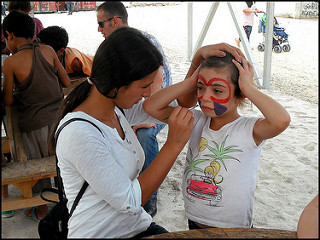
Written for ASSIST NEWS.
By this author:

Published on October 20, 2016 10:07
•
Tags:
child-refugees, greece, migration, softex-factory, war-in-syria
June 25, 2016
Back at The Independent

One broadsheet edition I kept from 2003.
‘It is. Are you?’ read The Independent’s posters on its launch in 1986, and I remember staring curiously at one that year emblazoned on a footbridge at Bournemouth railway station. Whilst chatting to a publisher on the phone this spring about changes in the industry, he brought up the subject of the March end of The Independent in print.
When The Indy began, there was no worldwide web, and all news journalism is being turned upside down by the digital revolution. At its peak, it had a circulation of around 400,000, but had since languished to a print readership of 56,000. “There, but for the grace of the digital gods, go all of us,” wrote a Guardian comment piece.
In the Nineties, I became an enthusiastic reader of the print edition. Styled on ‘Picture Post’, the Saturday Magazine sparked in me an interest in photojournalism which remains. In my mind’s eye, I can still see one strangely wonderful feature on a dog osteopath. As a huge German Shepherd was having its vertebrae realigned its tongue lolled out with an expression of blissful relief.
For freelancers, The Independent presented opportunities to new writers across considerable column inches, which I summoned up the ‘chutzpah’ to try for. There was the brief written pitch, and the nerve-racking follow-through call to the editor, which sometimes ended in moments of elation - the air-punching satisfaction of acceptance - and later a glowing pride at seeing work there.
For me, it became a run of ten features in the travel section: 48 Hours in Munich, The Oldest Curry House in Bradford, a piece on Saltaire, ‘Not Much Trouble at Mill’, and another on the Taizé Community in France with a huge black and white image I’d shot - Picture Post style.
I learnt then an important lesson in topicality: the ‘why now?’ question all news editors ask. A feature I’d written on film locations in San Francisco had been languishing in an in-tray, but was swiftly run after an email tip-off I sent them that ‘Vertigo’ was being screened in a central London cinema. I punched the air one more time that day.
“Can’t you offer a more committed arrangement?” I once asked an editor there. Towards the end of that time, he asked me for a meeting at Bristol’s ‘Watershed’ to talk about being ‘retained’. By then, though, my own writing was moving in a different direction, and I did not go.
Over dinner with the publisher in Wiltshire this month, an unusual privilege for a writer, we chatted again about The Independent and how publishing has changed. The Evening Standard is now free at London stations, he noted; Google is creating an expectation of free content; it’s not easy even for the larger publishers. He too was seeking new models of operation, and the traditional deals he once offered may well be fewer.
Back at The Independent, the remaining tabloid ‘i’ has been sold off to the owners of The Scotsman and The Yorkshire Post. It will function solely now as a website and an app. ‘It is… hardly. Are you?’ might be a suitable epigram sprayed on that footbridge at Bournemouth railway station.
So long The Independent in print… and thanks for all the creative flair, opportunity and inspiration. You’ll be missed.
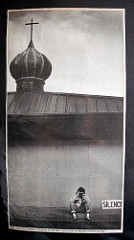
My photo at the Taizé Community.
Three of the above articles:
http://www.independent.co.uk/travel/n...
http://www.independent.co.uk/arts-ent...
http://www.independent.co.uk/news/edu...
By this author:

Published on June 25, 2016 02:16
•
Tags:
digital-revolution, freelance-writing, picture-post, saltaire, the-independent
October 1, 2015
Macedonian Migration
Went to the Idomeni refugee/migrant transit camp on the Greek border with FYR Macedonia yesterday, which receives thousands of people per day on route for Germany and northern Europe. We drove the 600km round trip to give them our gifts of 90 litres of water, plastic sheeting for 19 families, medicines and a big sack of shoes. Here’s a snap. We had a blessed day!
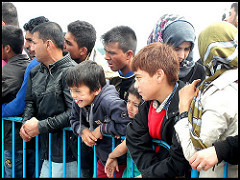
http://www.bbc.com/news/world-europe-...
‘Arrests have been made in the breaking of a people-smuggling gang by the French police in Calais, reports the Daily Mail. It’s believed to have smuggled 100 Albanian nationals into the UK, transporting them by boat to remote coves on England’s south coast between Weymouth and Plymouth…’ As such stories emerge, find out more about life in Albania through ‘The Silencer’; a novel set both there and in the UK.
https://www.goodreads.com/book/show/1...

http://www.bbc.com/news/world-europe-...
‘Arrests have been made in the breaking of a people-smuggling gang by the French police in Calais, reports the Daily Mail. It’s believed to have smuggled 100 Albanian nationals into the UK, transporting them by boat to remote coves on England’s south coast between Weymouth and Plymouth…’ As such stories emerge, find out more about life in Albania through ‘The Silencer’; a novel set both there and in the UK.
https://www.goodreads.com/book/show/1...
Published on October 01, 2015 05:45
•
Tags:
albania, calais, greece, macedonia, migration, people-smuggling, united-kingdom
September 24, 2015
Shadowing 'the Jackal' across Paris

'The Jackal' had Charles De Gaulle in his sight on Rue de Rennes.
“Half a million dollars is the price,” says the blonde Englishman being hired to assassinate French President Charles De Gaulle. “Considering you expect to get France itself, you esteem your country very cheap,” he adds noting the shock at his fee. With the contract made, the story commences of how the Organisation Armée Secrète (OAS) hire ‘Charles Calcot’ - the first three letters of each name making CHA-CAL (jackal in French) - to remedy their sense of betrayal at the granting of Algerian independence.
In ‘The Day of The Jackal’ we read of the assassin’s meticulously prepared false identities: the Danish Pastor Jensen, the American student Marty Schulberg and others. He orders his custom-built weapon from the mild-mannered Belgian armourer Goossens. He tests it in a forest glade in the Ardennes, and then welds it under the chassis of his sports car as he journeys towards Paris. Yet it is through the capture and torture of OAS bodyguard Viktor Kowalski that the Action Service get their breakthrough. Then the unassuming detective, Commissaire Claude Lebel, is charged with the unenviable task of identifying and stopping the approaching ‘Jackal’.
The idea for the story came apparently to Frederick Forsyth whilst he was working as a Reuters correspondent in Paris in the early 60’s: the time in which the book’s events are set. The paramilitary organisation OAS existed as described in the book, and the Bastien-Thiry ambush in Chapter 1 is accurate. Forsyth reported from the actual scene and befriended several of De Gaulle’s bodyguards to boot. The rest of the award-winning plot, which he wrote to clear his debts, is fictional, and its success across four decades began with him commenting that he’d “never seen money like it”. Debts paid.
Unlike most novelists at the time, Forsyth used the research techniques of investigative journalism to give it an increased reality. It reads like a reconstruction of historical fact, and, that said, could have used a little more fiction-writing technique in places to add vividness. Yet what we are given is a hugely enjoyable tale of negative tension, where the reader wants something not to happen: the assassination of a French President. As the heads of various departments of state security confer nightly around a table, one can imagine similar scenes in the Paris of our times as new threats to France are faced following the attacks on Charlie Hebdo, the Grenoble gas factory and the Thalys train. It’s to be hoped that men of Commissaire Lebel’s tenacity exist in reality as well as fiction.
And so one recent September afternoon in Paris, with the indulgence of my wife, we wandered south of the Jardin Du Luxembourg in search of the very spot where the climactic action was set. We threaded our way past pavement cafes along the Rue Vavin towards the Boulevard du Montparnasse. It was an unmistakable site at 154 Rue de Rennes where on page 354 Forsyth writes: ‘Six floors up and a hundred and thirty meters away the Jackal held his rifle very steady and squinted down the telescopic sight…’ I took out my camera, focussed and shot the rooftops, recalling the scene: ‘Marchons, marchons a la Victoire’ went the national anthem as the tall, proud general in his khaki kepi hat was positioned in the crosshairs. He pins a medal on a war veteran, leans forward to kiss the man on each cheek suddenly, and… Well, as the story ends, ‘The day of the Jackal was over.’
By this reviewer:

Published on September 24, 2015 07:30
•
Tags:
boulevard-du-montparnasse, charles-de-gaulle, charlie-hebdo, frederick-forsyth, oas, paris, rue-de-rennes, the-day-of-the-jackal
March 19, 2015
A far, far better historical thriller
Paul Alkazraji on a ‘Tale of Two Cities’, Sydney Carton and Paris...
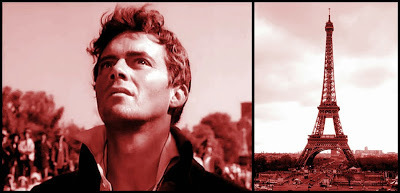
Dirk Bogarde as Sydney Carton in the 1958 film version.
‘It was the best of times, it was the worst of times...’ begins Charles Dickens’ thrilling novel set in England and France during the turbulent years of the French Revolution. It tells the story of the return from London to Paris in 1792 of Charles Darnay, the Marquis of Evremonde, an aristocrat who had renounced his title and privileges, to help a forlorn servant in his former household. The lives of all those around Darnay - his wife Lucie, her father Doctor Manette, the lawyer Sydney Carton and spy Barsad - become bound into the ensuing intrigue and danger.
Dickens describes so well the wild, fickleness of the mob gathered for Darnay’s trial at the Conciergerie, and the sense of evil abroad in Paris at night as the people sharpen their weapons on a bloody grindstone in the St Germain courtyard of Tellson’s Bank. The callousness of the aristocracy is accounted for too, as a relative of Darnay’s ploughs over a child in his carriage and horses and tosses a few coins out of the window in ‘compensation’.
The book details how social injustice and the abuse of power led to a merciless vengeance on the aristocratic class. Personifying it is the Republican ringleader, Madame Defarge, who knits, mechanically adding the names to the register for vengeance at her wine shop with other revolutionaries: they who refer to each other in code as ‘Jaques’. “Then tell Wind and Fire where to stop, but don't tell me,” she says, as the ‘Reign of Terror’ rises to its excesses.
Whilst reading the novel on a recent trip to Paris, I felt able to enter through its pages into the city’s history. The dark iron keys from the Bastille fortress lay in a glass cabinet at the Carnavalet Museum, and the paintings there depict scenes from the period vividly in oil. At the Conciergerie were the straw-floored cells where suspects were kept before being brought for trial at the Revolutionary Tribunal upstairs. Queen Marie Antionette’s cell is left as it is thought to have been. At the ‘corner of last goodbyes’ in the women’s courtyard, the condemned waited for the tumbrils to take them to the Place de la Concorde - the losers in the ‘lottery of Sainte Guillotine’.
‘A Tale of Two Cities’, a reference point for my own novel ‘The Silencer’, sweeps towards a tense climax and the central act of Sydney Carton’s self-sacrifice for the good of Lucie Manette and her family. As Carton walks through the streets of Paris and lingers by the River Seine contemplating all the faults and mistakes in his own life, the words of Christ rise within him, ‘I am the resurrection and the life. Whoever believes in me, even though he is dead, he shall live. And whoever lives and believes in me shall never die’. And so the famous words ascribed to Sydney Carton as he ascends the scaffold in his final moments are: “It is a far, far better thing that I do, than I have ever done; it is a far, far better rest that I go to than I have ever known.” Ce est un livre superbe!
By the author:


Dirk Bogarde as Sydney Carton in the 1958 film version.
‘It was the best of times, it was the worst of times...’ begins Charles Dickens’ thrilling novel set in England and France during the turbulent years of the French Revolution. It tells the story of the return from London to Paris in 1792 of Charles Darnay, the Marquis of Evremonde, an aristocrat who had renounced his title and privileges, to help a forlorn servant in his former household. The lives of all those around Darnay - his wife Lucie, her father Doctor Manette, the lawyer Sydney Carton and spy Barsad - become bound into the ensuing intrigue and danger.
Dickens describes so well the wild, fickleness of the mob gathered for Darnay’s trial at the Conciergerie, and the sense of evil abroad in Paris at night as the people sharpen their weapons on a bloody grindstone in the St Germain courtyard of Tellson’s Bank. The callousness of the aristocracy is accounted for too, as a relative of Darnay’s ploughs over a child in his carriage and horses and tosses a few coins out of the window in ‘compensation’.
The book details how social injustice and the abuse of power led to a merciless vengeance on the aristocratic class. Personifying it is the Republican ringleader, Madame Defarge, who knits, mechanically adding the names to the register for vengeance at her wine shop with other revolutionaries: they who refer to each other in code as ‘Jaques’. “Then tell Wind and Fire where to stop, but don't tell me,” she says, as the ‘Reign of Terror’ rises to its excesses.
Whilst reading the novel on a recent trip to Paris, I felt able to enter through its pages into the city’s history. The dark iron keys from the Bastille fortress lay in a glass cabinet at the Carnavalet Museum, and the paintings there depict scenes from the period vividly in oil. At the Conciergerie were the straw-floored cells where suspects were kept before being brought for trial at the Revolutionary Tribunal upstairs. Queen Marie Antionette’s cell is left as it is thought to have been. At the ‘corner of last goodbyes’ in the women’s courtyard, the condemned waited for the tumbrils to take them to the Place de la Concorde - the losers in the ‘lottery of Sainte Guillotine’.
‘A Tale of Two Cities’, a reference point for my own novel ‘The Silencer’, sweeps towards a tense climax and the central act of Sydney Carton’s self-sacrifice for the good of Lucie Manette and her family. As Carton walks through the streets of Paris and lingers by the River Seine contemplating all the faults and mistakes in his own life, the words of Christ rise within him, ‘I am the resurrection and the life. Whoever believes in me, even though he is dead, he shall live. And whoever lives and believes in me shall never die’. And so the famous words ascribed to Sydney Carton as he ascends the scaffold in his final moments are: “It is a far, far better thing that I do, than I have ever done; it is a far, far better rest that I go to than I have ever known.” Ce est un livre superbe!
By the author:

Published on March 19, 2015 06:49
•
Tags:
a-tale-of-two-cities, carnavalet-museum, charles-darnay, charles-dickens, christ, conciergerie, london, madame-defarge, marie-antionette, paris, saint-germain, sydney-carton, the-bastile, the-french-revolution
December 4, 2014
Behind the scenes... and personal
'The Silencer’ 2nd Anniversary of publication.
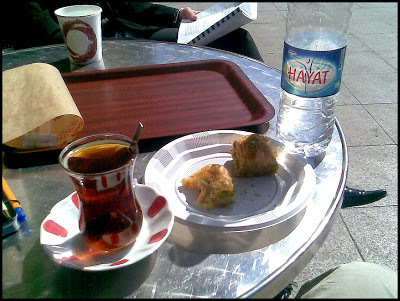
Doing table top research on the Ataturk Boulevard, Istanbul,
just watching...
(Here Sheref Dushman meets contacts and prepares to depart for Greece from Sirkeci Railway Station.)
During the field research I discovered that the 'Friendship Express' service between Istanbul and Thessaloniki had stopped altogether just a month before I wanted to take it. So I had to work out an alternative way of experiencing the journey Sheref makes. My wife and I found a coach trip for Istanbul from Albania on Women's Day 2011, and travelled roughly along the same route through the night, at times parallel to the railway lines. The excursion degenerated into chaos in Istanbul, though, as the passengers complained and demanded their own personal itineraries be met, and the organisers, who had had enough of them, dumped them all in vexation! Caught in the middle of it, we ended up locked inside the coach for over two hours. But that said, I was still able to do what I had set out to. I would have loved to have taken the train. As an aside, it is the first section of the route Bond travels with Tatiana Romanova and the 'SPEKTOR' machine in Fleming's 'From Russia With Love'.
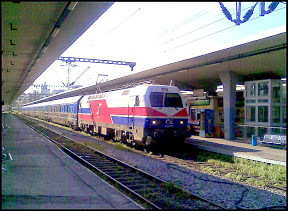
Thessaloniki Railway Station where I just missed catching ‘The Friendship Express’
(by about a month).

With my wife, Albana, and son Hanniel, 6, in Galicitsa Park, F.Y.R.O.M.
September, 2014.
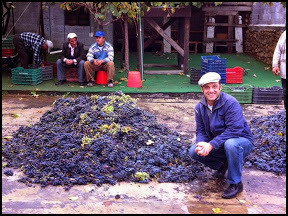
Gathering the grapes in a church yard, Albania.
Me, September, 2014.
By this author: The Silencer

Doing table top research on the Ataturk Boulevard, Istanbul,
just watching...
(Here Sheref Dushman meets contacts and prepares to depart for Greece from Sirkeci Railway Station.)
During the field research I discovered that the 'Friendship Express' service between Istanbul and Thessaloniki had stopped altogether just a month before I wanted to take it. So I had to work out an alternative way of experiencing the journey Sheref makes. My wife and I found a coach trip for Istanbul from Albania on Women's Day 2011, and travelled roughly along the same route through the night, at times parallel to the railway lines. The excursion degenerated into chaos in Istanbul, though, as the passengers complained and demanded their own personal itineraries be met, and the organisers, who had had enough of them, dumped them all in vexation! Caught in the middle of it, we ended up locked inside the coach for over two hours. But that said, I was still able to do what I had set out to. I would have loved to have taken the train. As an aside, it is the first section of the route Bond travels with Tatiana Romanova and the 'SPEKTOR' machine in Fleming's 'From Russia With Love'.

Thessaloniki Railway Station where I just missed catching ‘The Friendship Express’
(by about a month).

With my wife, Albana, and son Hanniel, 6, in Galicitsa Park, F.Y.R.O.M.
September, 2014.

Gathering the grapes in a church yard, Albania.
Me, September, 2014.
By this author: The Silencer
Published on December 04, 2014 02:40
•
Tags:
albania, from-russia-with-love, greece, ian-fleming, istanbul, ohrid, orient-express, sirkeci, the-friendship-express, thessaloniki, turkey
November 9, 2014
The Berlin Wall fell 25 years ago this night...
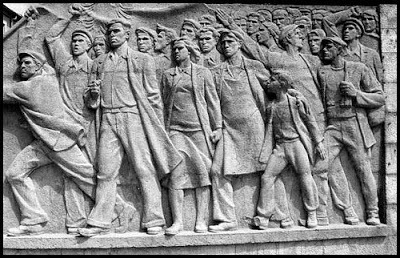
Twenty five years ago, on the night of Nov. 9, 1989, the Berlin Wall came down. East German authorities opened the border between East and West Berlin and the door to the fall of Communism across Eastern Europe. Stories of what happened in the lives of some of those who emerged ‘through the wall’ from half a century of isolation in one of those countries, Albania, are told in ‘Christ and the Kalashnikov’ and ‘The Silencer’. A little more can be found by reading on...
https://www.goodreads.com/review/show...
https://www.goodreads.com/review/show...
Published on November 09, 2014 10:10
•
Tags:
albania, berlin-wall, checkpoint-charlie, communism, eastern-europe
September 25, 2014
Pope Francis honours Albania’s persecuted and thanks ’alive’ church (+ radio interview)
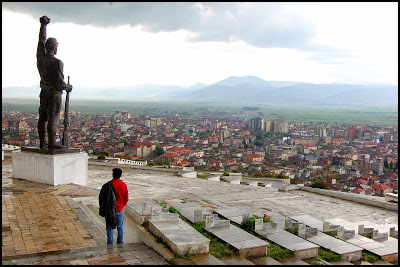
Communist monument in southern Albania.
By Paul Alkazraji in Albania (Sunday, September 21st, 2014).
Along the Boulevard of National Martyrs in Albania’s capital Tirana photos of the priests and nuns who fell victim to the country’s violent Communist persecutions were draped in remembrance before Pope Francis and the tens of thousands gathered on Sunday for the Mass and his homily.
In addition to the key themes of encouraging Albania’s young to build their lives in Christ, and fostering peaceful co-existence between the different religious communities, he drew attention to how the country had “suffered so much because of a terrible atheist regime”.
“Albania sadly witnessed the violence and tragedy that can be caused by a forced exclusion of God from personal and communal life,” he said. “When, in the name of an ideology, there is an attempt to remove God from a society, it ends up adoring idols, and very soon people lose their way, their dignity trampled and rights violated.”
After their rise to power near the end of WWII, the Communists decreed that the activities of all religious communities be supervised by the state. It was after Mao Zedong’s Cultural Revolution in 1966 spawned a similar movement in Albania, however, that the church faced its darkest hour.
Student agitators roamed the countryside forcing people to renounce their faith. The remnants of the fledgling Protestant church was driven further underground. Catholic and Orthodox priests were interned and over a hundred and twenty died through the harsh conditions, torture or execution. Outside a cemetery in the northern city of Shkoder many were shot by firing squad. Around 2000 churches and mosques were destroyed or converted into warehouses or gymnasiums. To achieve ‘the world’s first atheist state’ faith communities were obliterated.
Of those that survived to tell their stories the Franciscan Zef Pllumi emerged as an articulate voice through his book, ‘Live to Tell’, an account of his cruel treatment in internment camps. Often called the Albanian ‘Gulag Archipelago’ due to its similarities to Alexander Solzhenitsyn’s work, some find it difficult to even endure reading its narrative of suffering.
On that morning of Pope Francis’ visit, as I drove with the leaders of a new village church-plant close to the site of one of the places Zef Pllumi was imprisoned, at the Orman-Pojanit camp near Maliq, one told me a further story. It was of a priest who had been beaten about the head and buried alive there.
A second-century Church Father wrote those well-known words ‘the blood of martyrs is the seed of the Church’. Close to the periphery of that camp site, there are now two flourishing churches filled with happy, worshipping communities every Sunday, with a third also growing. At one, in a village, twenty new believers were baptised this summer. May it delight that priest in heaven to know it.
One of the new believers, a man in his seventies who lived through those times, waded out into the lake for his baptism with abandon in his long-johns, and speaks of how he could not imagine that his life would change so much at this stage. “I sleep much better. My heart is filled with the love of God, and praying all the time gives me new strength,” he says.
From Mother Teresa Square down the Boulevard of National Martyrs Pope Francis spoke the final words of his homily. “To the Church which is alive in this land of Albania, I say “thank you” for the example of fidelity to the Gospel! So many of your sons and daughters have suffered for Christ, even to the point of sacrificing their lives. May their witness sustain your steps today and tomorrow as you journey along the way of love, of freedom, of justice and of peace.”
End.
Radio interview on United Christian Broadcasters for the Paul Hammond Show about Albania and the Pope's visit (23/9/14): http://www.mixcloud.com/Muthena/pope-...
By this writer: The Silencer
The remnants of the Albanian protestant church discovered in 1991
(From Chapter 4 ‘Midnight by the railway tracks’, Christ and the Kalashnikov.)
Later that afternoon, as we hovered around the hotel lobby anxiously biding our time, I sensed that there were many others in the building watching us. At quarter to four, I glanced around at the team. It was time to step out, and my stomach seemed to rise like when speeding in a car across a humpbacked bridge. Together we walked through the glass entrance doors and around to the park at the rear. The security officer scurried quickly after us. As we crossed the grass my heart sank; there were little more than around thirty people ahead, casting their eyes around uneasily, and I couldn’t see Sokoli. I wondered if what we were going to try was led by the Holy Spirit or just foolhardy. We quickly set up a sketchboard to paint a visual message, and the YWAM team began to perform a short drama. It was then that I noticed something. All around the edge of the park, people were watching at a distance. As the presentation continued they began to edge timidly forwards, glancing at each other and us. As the drama drew to a close, we were surrounded by literally hundreds.
The moment in the programme had arrived to preach a short message, and yet no one spoke Albanian fluently enough to do it. I glanced around anxiously, grasping my Bible, and then began in English. Suddenly, a young man with curly, brown hair stepped forwards from the crowd. “My name is Ardian,” he said quickly, “I will translate for you.” As I continued to speak, Ardian relayed the message confidently to the crowd. My pulse was racing. I was amazed and I thanked God under my breath. I now watched the faces of those close in front of us as they stood jostling and craning their necks for a better view. As I spoke, I had never witnessed a crowd polarise so visibly to what they were hearing: an ageing woman in a black headscarf whose eyes narrowed as she pulled away; a teenage boy with a half-grown moustache whose mouth began to widen like a fish. It was as if a light was shining so clearly in the park that there were no grey areas, just highlight and shadow across the people’s faces. When Ardian finished translating, he concluded as if his heart had made its own choice as he’d stood there: “I know this message is true, because it was so for me,” he declared. I stepped back up onto the edge of a small, stone platform. By now the crowd had spread back across the grass. People were climbing up trees and standing on the tops of park benches, and around the edges of the grass were dozens of soldiers who had been listening in to the talk. Suddenly, shouting broke out at the rear of the crowd and people began to scatter across the grass. Four police cars had braked in the road, and the officers appeared to be arguing amongst themselves as well as trying to break through the people. The soldiers, however, were crowding up to them red-faced and pushing them back, waving their arms in the air. I looked back down at the team. It seemed like the right moment to leave. We packed up the equipment we had brought, and mingled in with the crowds as the park began to empty rapidly.
Back at the hotel, we were floating but afraid. No one could quite believe the response that we’d had, and how Ardian, whom I now remembered meeting briefly in Thessaloniki, had stepped forward publicly at great risk to himself. One black mark in your biography file could mean interrogations or worse, and the Sigurimi were always watching. Our brown-suited spy had seen it all, and we knew he’d make his reports. We held our breath and waited for the ensuing consequences throughout the evening.
A soft tapping came on the door of my hotel room at around midnight. My roommate looked anxiously across. I pulled on my shoes, and moments later turned the key in the lock. I opened the door cautiously. Outside in the corridor stood an old man with dark, bushy eyebrows and a warm expression. He held out his hand. “I am Ligor Çina, a member of the church in Korçë,” he whispered. He beckoned for us to follow him. I felt a little apprehensive, but at peace somehow that the man’s introduction was genuine. We locked the room and followed a couple of paces behind him down the silent hotel corridor.
Just five minutes walk from the entrance of the Hotel Iliria, we entered a small stone cottage, ducking to avoid the lintel. The interior was dimly lit and smelt a little of feet. Ligor gestured us through a further doorway where another elderly man with dark, sparking eyes sat regally on a wooden chair, his face half-lit by a single light bulb. A candle was flickering on the window ledge. Ligor introduced the man as ‘Koci Treska’. I stepped forwards and shook his hand. After we had sat across from him, he wasted no time in addressing us, and I waited for my roommate to translate. As I watched him talk, his manner seemed formal, yet I could see tears in his eyes. He brushed his cheek intermittently with his hand. Despite his frail physique, the man possessed a noticeable inner strength. I could feel my own tears welling up before I knew what he was saying. Shortly, my roommate turned to look at me.
“He says that he, Ligor and a handful of others are the only remaining members of a church stared before the outbreak of the Second World War… by two American missionaries, Kennedy and Jaques… They were the youth group,” he said, pausing whilst he too now steadied his voice. “He says that they have kept their faith secretly for over fifty years, and word reached him today that the Gospel had been preached on the streets of his town for the first time since the Communists took control. He wanted to meet us and to thank us. He has been praying for this day for years. He says that he is ready now to die with contentment.” I too now brushed my cheek. He reached forwards and for a couple of seconds we clasped hands. My roommate continued: “He says that we should go now, but he hopes that we will return here.” I was overcome – a lifetime of covert belief, and we were his first confidants. Koci now gestured towards the door. The meeting was over. As we stood up to leave, Ligor stepped ahead of us. Outside the cottage, he looked both ways. We shook hands firmly, and we scurried away along the dark, side street.
Copyright Paul Alkazraji. Christ and the Kalashnikov, Marshall Pickering. 2001. All Rights Reserved.
By this writer: Christ and the Kalashnikov
Published on September 25, 2014 03:36
•
Tags:
albania, alexander-solzhenitsyn, catholic, church, communism, cultural-revolution, mao-zedong, mother-teresa-square, orthodox, pope-francis, protestant, sigurimi, thessaloniki, ywam, zef-pllumi
June 8, 2014
'The Silencer' giveaways coming... and 'Radio Radio'
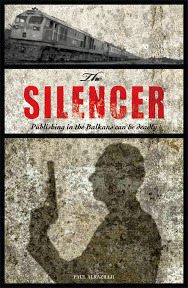
Alternative cover design for 'The Silencer' (unused)
Watch out for more giveaways of 'The Silencer' on Goodreads this summer in the UK, USA, Albania, Greece and Turkey. In the meantime, here's what two readers have said recently about it elsewhere...
Couldn't put it down
26 May 2014
'Really enjoyed this well written thriller. Having visited Albania myself it succeeded in capturing the true essence of the country. A real page turner.' Anne on Amazon UK.
'Paul Alkazraji does a great job at crafting a story that has both an exciting plot and time spent on developing the characters. It is well-paced, and difficult to put down but the author does not skimp on description. The back-drop of Albania especially is almost a character itself, as the author vividly describes what are clearly familiar aspects of culture and geography. The rhythm of life of the main characters is very realistic and in the end as the pace increases, the reader really cares about these people. I also found the inclusion of faith in the narrative handled realistically and sensitively. It would appeal to a wide audience of lovers of fiction and travel writing.' Anna on Amazon UK.
Radio Interview
Radio interview at Branch FM UK on 26/06/2014... Chatting about Albania, books, Norman Wisdom, ex-football hooligan Dave Jeal and 'The Silencer'...
Click here:
http://www.mixcloud.com/Branchfm/paul...
Published on June 08, 2014 09:49
•
Tags:
adventure, albania, christian, england, ergenekon, greece, mission, persecution, suspense, the-church, thessaloniki, thriller, travel, turkey



